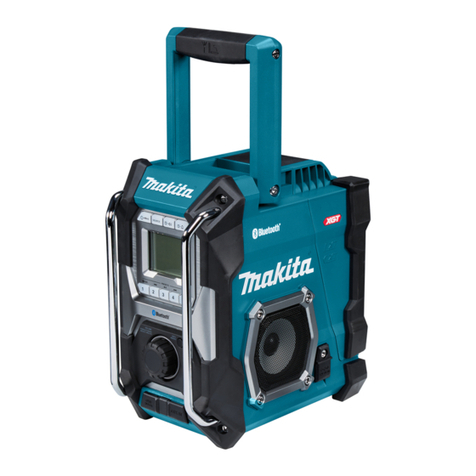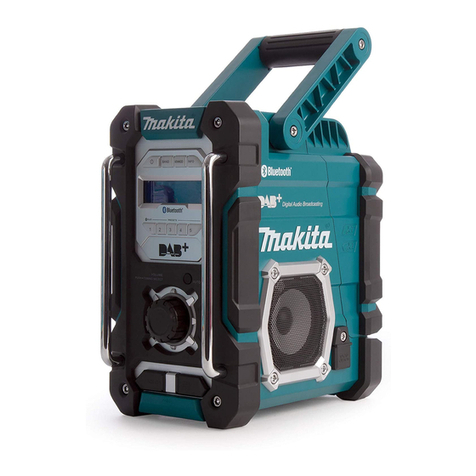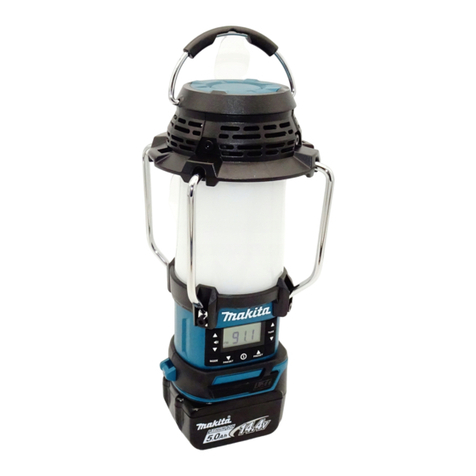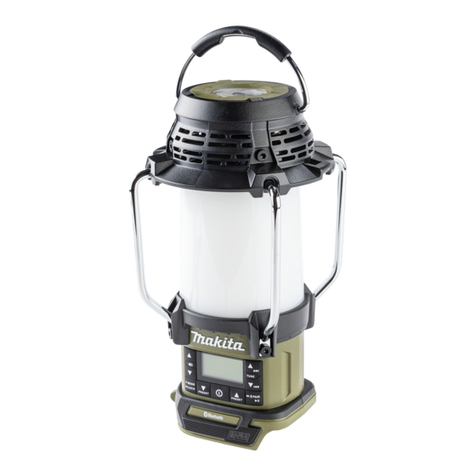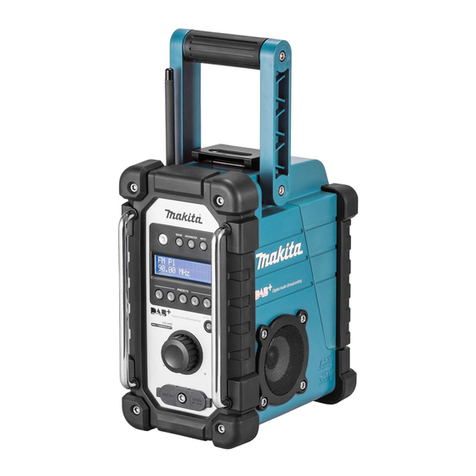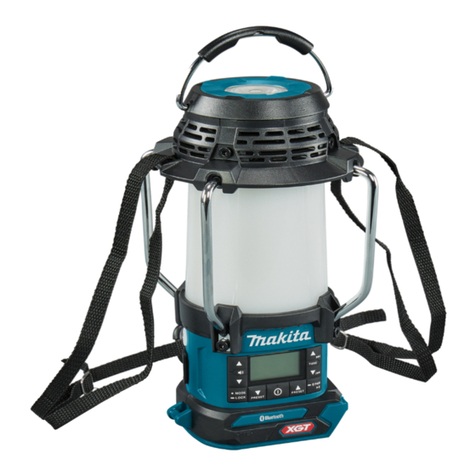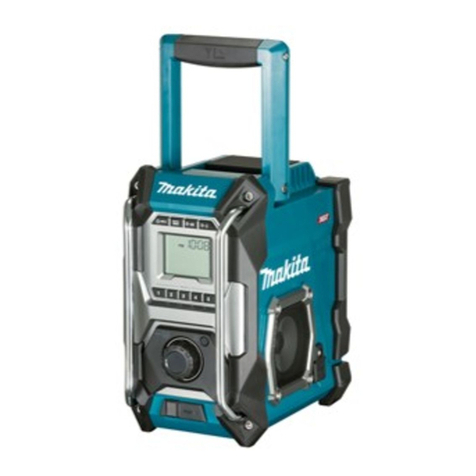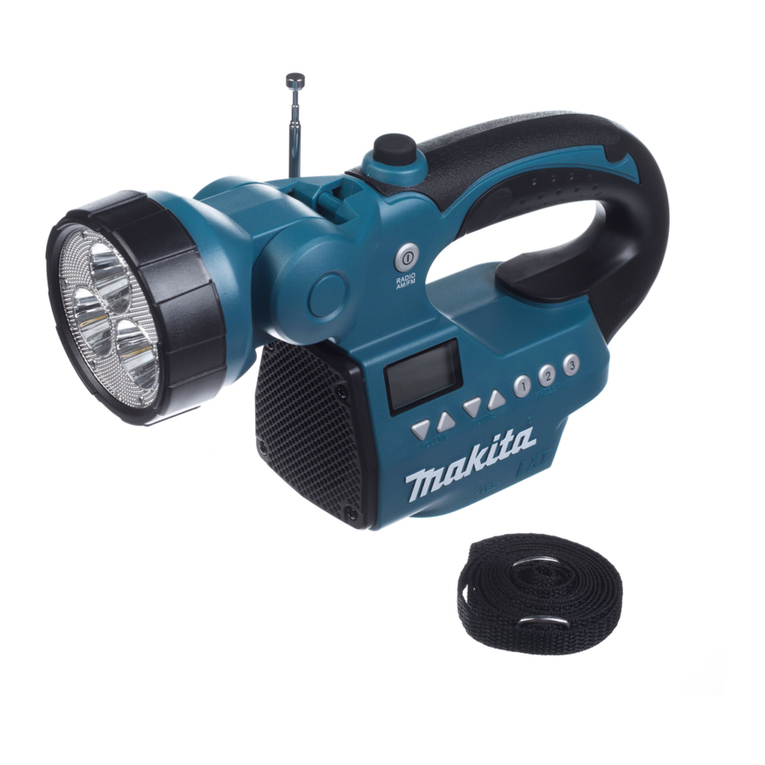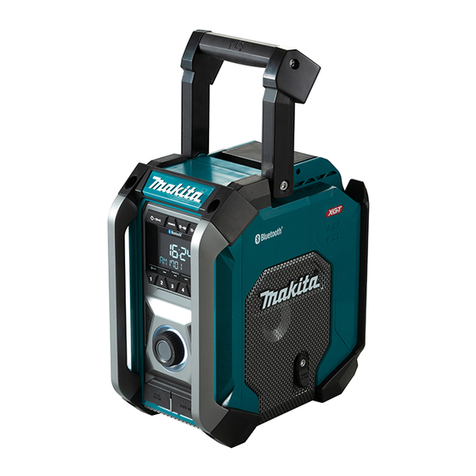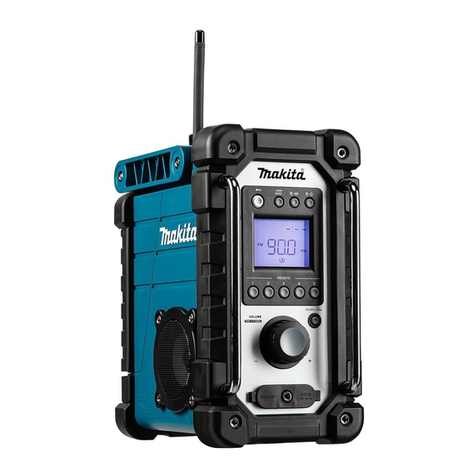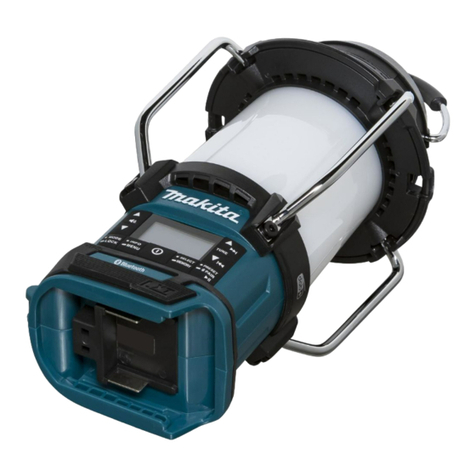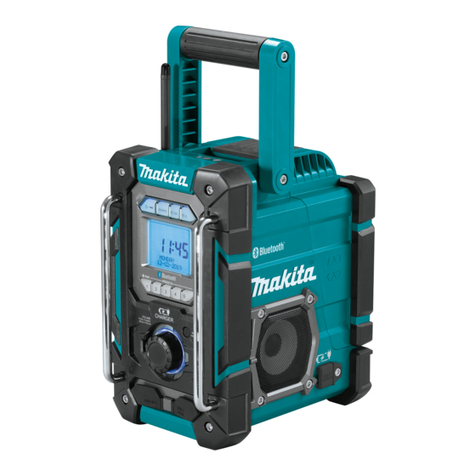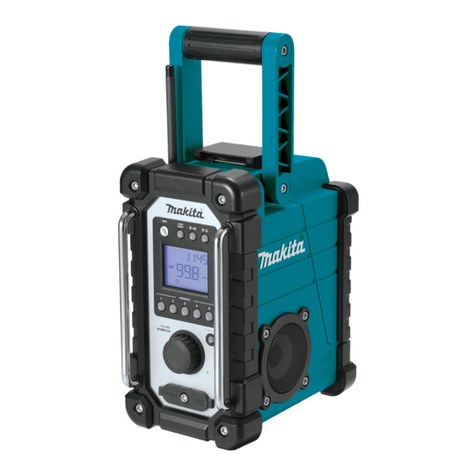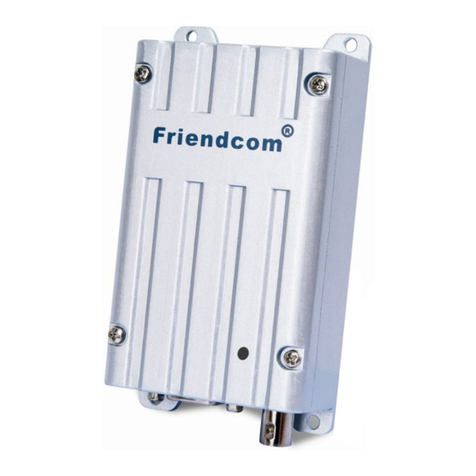
8ENGLISH
5. Unplug this appliance during lightning storms
or when unused for long periods of time.
6. The battery pack must be recharged only with
this radio or the specied charger for the bat-
tery. A charger that may be suitable for one
type of battery may create a risk of re when
used with another battery.
7. Use battery operated radio only with specif-
ically designated battery packs. Use of any
other batteries may create a risk of re.
8. When battery pack is not in use, keep it away
from other metal objects like: paper clips,
coins, keys, nails, screws, or other small metal
objects that can make a connection from one
terminal to another. Shorting the battery ter-
minals together may cause sparks, burns, or a
re.
9. Avoid body contact with grounded surfaces
such as pipes, radiators, ranges and refrig-
erators. There is an increased risk of electric
shock if your body is grounded.
10. Under abusive conditions, liquid may be
ejected from the battery; avoid contact. If
contact accidentally occurs, ush with water.
If liquid contacts eyes,additionally seek med-
ical help. Liquid ejected from the battery may
cause irritation or burns.
11. Do not use a battery pack and radio that is
damaged or modied. Doing so may exhibit
unpredictable behaviour resulting in re, explosion
or risk of injury.
12. Do not expose a battery pack or tool to re
or excessive temperature. Exposure to re or
temperature above 130 °C(266°F) may cause
explosion.
13. Follow all charging instructions and do not
charge the battery pack or tool outside the
temperature range specied in the instruc-
tions. Charging improperly or at temperatures
outside the specied range may damage the
battery and increase the risk of re.
14. The MAINS plug is used as the disconnect
device. The MAINS plug shall remain readily
operable.
15. Do not use the product at a high volume for
any extended period. To avoid hearing damage,
use the product at moderate volume level.
16. LCD displays include liquid which may cause
irritation and poisoning. If the liquid enters the
eyes, mouth or skin, rinse it with water and call a
doctor.
17. Do not expose the product to rain or wet con-
ditions. Water entering the product will increase
the risk of electric shock.
18. This product is not intended for use by per-
sons (including children) with reduced phys-
ical, sensory or mental capabilities, or lack
of experience and knowledge, unless they
have been given supervision or instruction
concerning use of the product by a person
responsible for their safety. Children should be
supervised to ensure that they do not play with
the product. Store the product out of the reach
of children.
19. Be careful not to pinch your ngers when
opening and closing the battery cover.
20. Return the battery compartment locker to the
original position, after installing or removing
battery pack. If not, battery pack may accidentally
fall out of the radio, causing injury to you or some-
one around you.
21. Always close and lock the battery compart-
ment locker before moving the radio.
22. When the radio is powered from the battery,
switch o the radio before removing the bat-
tery pack.
23. Be careful not to drop or strike the radio.
Broken shell may slash your nger or stab
your body. Damaged radio may exhibit unpredict-
able behaviour resulting in re, explosion or risk of
injury.
24. Have servicing performed by a qualied repair
person using only identical replacement parts.
This will ensure that the safety of the product is
maintained.
25. Do not modify or attempt to repair the appli-
ance or the battery pack except as indicated in
the instructions for use and care.
Important safety instructions for
battery cartridge
1. Before using battery cartridge, read all instruc-
tions and cautionary markings on (1) battery
charger, (2) battery, and (3) product using
battery.
2. Do not disassemble or tamper with the battery
cartridge. It may result in a re, excessive heat,
or explosion.
3. If operating time has become excessively
shorter, stop operating immediately. It may
result in a risk of overheating, possible burns
and even an explosion.
4. If electrolyte gets into your eyes, rinse them
out with clear water and seek medical atten-
tion right away. It may result in loss of your
eyesight.
5. Do not short the battery cartridge:
(1) Do not touch the terminals with any con-
ductive material.
(2) Avoid storing battery cartridge in a con-
tainer with other metal objects such as
nails, coins, etc.
(3) Do not expose battery cartridge to water
or rain.
A battery short can cause a large current
ow, overheating, possible burns and even a
breakdown.
6. Do not store and use the tool and battery car-
tridge in locations where the temperature may
reach or exceed 50 °C (122 °F).
7. Do not incinerate the battery cartridge even if
it is severely damaged or is completely worn
out. The battery cartridge can explode in a re.
8. Do not nail, cut, crush, throw, drop the battery
cartridge, or hit against a hard object to the
battery cartridge. Such conduct may result in a
re, excessive heat, or explosion.
